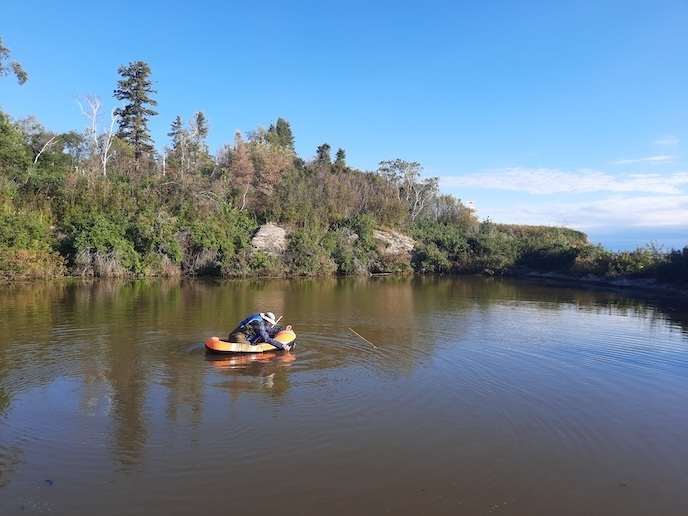Developing biological monitors for the gut
Could you capture the depth of life in a single photo? The methods scientists use to peer into the molecular biology of a cell function much like a camera, taking just one single snapshot. To truly understand all dynamic processes occurring at this level, something more akin to a video camera is needed. Researchers in the Department of Biosystems Science and Engineering(opens in new window) at ETH Zurich recently developed a technique(opens in new window) that does exactly that. This approach, known as ‘Record-seq’, uses CRISPR gene-editing technology to convert fragments of cellular RNA into DNA. RNAs contain messages about the current state of a cell, but degrade quickly – the information they can offer is static, like a photo. DNA can carry sequences of these messages, providing a longer timestamp – in essence, like a molecular video camera. In the CRISPRhistory(opens in new window) project, which was funded by the European Research Council(opens in new window), researchers aimed to use Record-seq for the continuous monitoring of processes within the mammalian gut. Cells in the gut respond to environmental changes by altering the expression of their genes, so tracking this could give us deeper insights into nutrition, or even the development of diseases such as cancer. The team focused on developing ‘sentinel cells’ that can record their environment. “We developed transcriptional recording with sentinel cells to work like biosensors, which give us a ‘record’ of what the cell has experienced,” explains Florian Schmidt(opens in new window), a scientist at ETH Zurich.
Creating biomonitors of the human gut
As bacteria pass through the gut, they are exposed to all sorts of different environments. Faecal analysis only gives a limited recent snapshot, yet researchers have a huge interest in what the bacteria has experienced further up in the intestine. To engineer sentinel cells with biosensors, the team turned to Escherichia coli, a bacterium naturally present in the human gut. While with Record-seq researchers can read out what E.coli can sense, several gut biomarkers associated with disease do not generate specific responses in E. coli. So to address this gap, the team developed novel biosensors targeting short-chain fatty acids, which are heavily implicated in host health, particularly in metabolic disorders, and are challenging to detect in clinical settings. “Our results suggest that outputs of these biosensors integrate seamlessly into the Record-seq architecture,” notes Schmidt. “We expect to conclude these efforts this year and submit a manuscript describing the work for publication in a peer-reviewed journal.”
Supporting gut microbiome research
Through research on mice, the team successfully showed that their Record-seq technology can be used as both a research and a diagnostic tool to investigate the gut microbiome. They were able to distinguish the different diets of mice, and even see when they have been eating an unhealthy diet for a week, even up to two weeks after they had been changed to a healthy diet again. “This holds great promise for the monitoring of human patients in the future,” adds Schmidt. The work also supports many other scientists in the field of gut microbiome research, by introducing a new tool that allows them to non-invasively interrogate the intestine. The team is now actively working on translating their technology so that it can eventually be deployed as a diagnostic in human patients. “This is a long path that will come with many exciting new discoveries,” says Schmidt.







